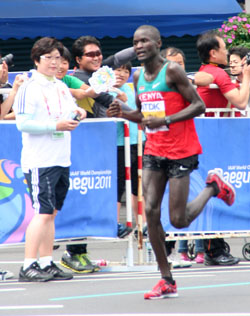Static friction: The force occurring between two dry surfaces that are not moving relative to each other.
![]()

A force is a push or a pull.
A force is something that has the ability to accelerate an object.
How much do you weigh?
W=mg
Internal forces-Forces that act within the object or system whose motion is being investigated.
External forces-Forces that act on an object as a result of its interaction with the environment surrounding it (3000m Steeplechase).|
Static friction: The force occurring between two dry surfaces that are not moving relative to each other. |
|
| Dynamic friction: The force occurring between two dry surfaces that are moving relative to each other. | |
| Rolling friction: The force acting between a surface and a rolling object due to the deformation of one or both objects. |  |
Shoe friction in running
Normal force and surface area (book examples)
 |
 |
Running forces @ 4:00 min/mi
Addition of Forces
What happens when there is more than one force?
Another resultant force in running
|
A 70 kg runner experiences air resistance of 15 N. During the heelstrike, he exerts an A/P force of 100 N. The vertical ground reaction force at this time was 1300 N. Draw a diagram of this situation and determine the resultant force (magnitude and direction relative to horizontal). |
When an object is at rest and the forces acting on the object are in equilibrium, they result in a net force of zero.
Gymnast example: Gymnast's mass=52kg, beam reaction force = 510N.
Is this system in static equilibrium?
